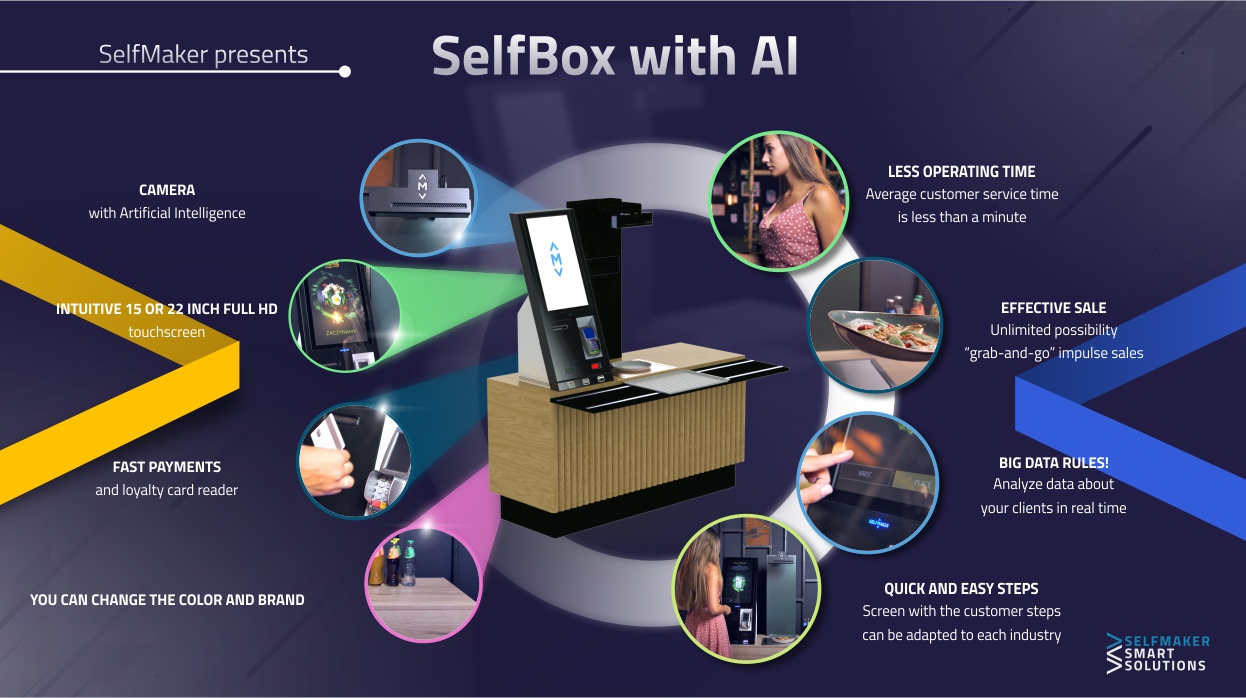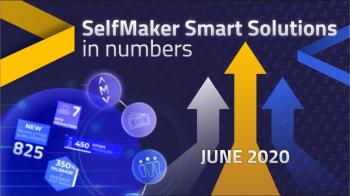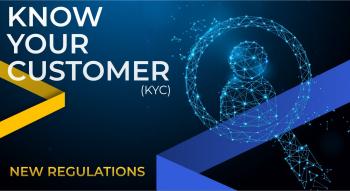Artificial Intelligence - the future of self-service

October 12, 2020 | #selfevolution academy
Self-service checkouts have been with us for years. Among the people who shop, there is probably not a single one that has not dealt with such devices. Whether it's using them in person or just stealthily peeking at other users. We know them mainly from larger supermarkets, where they support main checkouts, relieving employees and giving the opportunity to serve the more impatient or those whose purchases are not the most impressive in size. They are a big improvement, but also a nightmare. Why? Probably everyone who heard the mechanical "voice" of the kiosk shouting "INFORMATION REQUIRED" knows the answer to this question!
Not independent self-service
There is still a very long and winding road to excellence for self-service checkouts. You can get the impression that today's devices do not fully deserve to be called "self-service", because it is usually hard to get purchases undisturbed by the above-mentioned message. Help from a store employee is often unavoidable, which prolongs the purchase process, causes irritation and nervousness. Use of this type of cash registers is not always as easy as it may seem. According to research conducted by Shekel Brainweigh Ltd, as many as 75% of people found it difficult to correctly scan all products, and there were also system errors. The respondents were also asked a second question: "Would you like self-service checkouts to be able to automatically recognize products?" As many as 90% of the respondents answered yes, which may suggest the direction in which the development of this type of devices will go.
Chipped goods
Is such an improvement feasible with the possibilities offered by today's technology? Of course. The methods for achieving the goal vary, and some are a side effect of activities that had a completely different goal. This is exactly what happened in the Decathlon chain of stores, where RFID chips were used on each product for the faster inventory of goods. The same RFID chips are now used to automatically scan products at the self-checkout counter. It is enough to put the purchases into a special "basket" and the device will automatically recognize and sum them up. This solution will work in stores with less goods, but not necessarily in large supermarkets, where every single food product would have to be tagged with a chip. Impossible.
The electronic eye keeps watching
A much more advanced and less labor-intensive solution is the use of cameras equipped with an artificial intelligence system, that could visually recognize products placed on the scanning platform. We are still far from introducing this type of self-service checkout in large supermarkets, but the first functional applications appear surprisingly in ... gastronomy, and SelfMaker together with the SelfBox AI checkout is their pioneer. The SelfBox enriched with visual object recognition is the most modern device in our machine park. The cash register uses cameras to intelligently distinguish between everything that is placed in the designated zone. How does it look in practice? Being in a self-service restaurant, we compose our dish and then put all the extras such as soup, drink, dessert on the tray. Previously, the entire summation process had to be carried out by a cashier. In SelfBox, artificial intelligence recognizes what elements and in what quantity have been placed on the tray, automatically summarizes the order and allows for quick cashless payment.
Convenience of the 21st century
The whole process is very efficient, takes little time and reduces queues, while being very intuitive and trouble-free to use even for a person who is not familiar with modern technologies. Automatic product recognition is a direct response to the expectations of customers, who see the potential of self-service, but still feel lost or irritated by the imperfections of currently functioning solutions. The Selfbox AI checkout shows that the proper implementation of artificial intelligence can actually work and bring tangible benefits for both business and customers.










